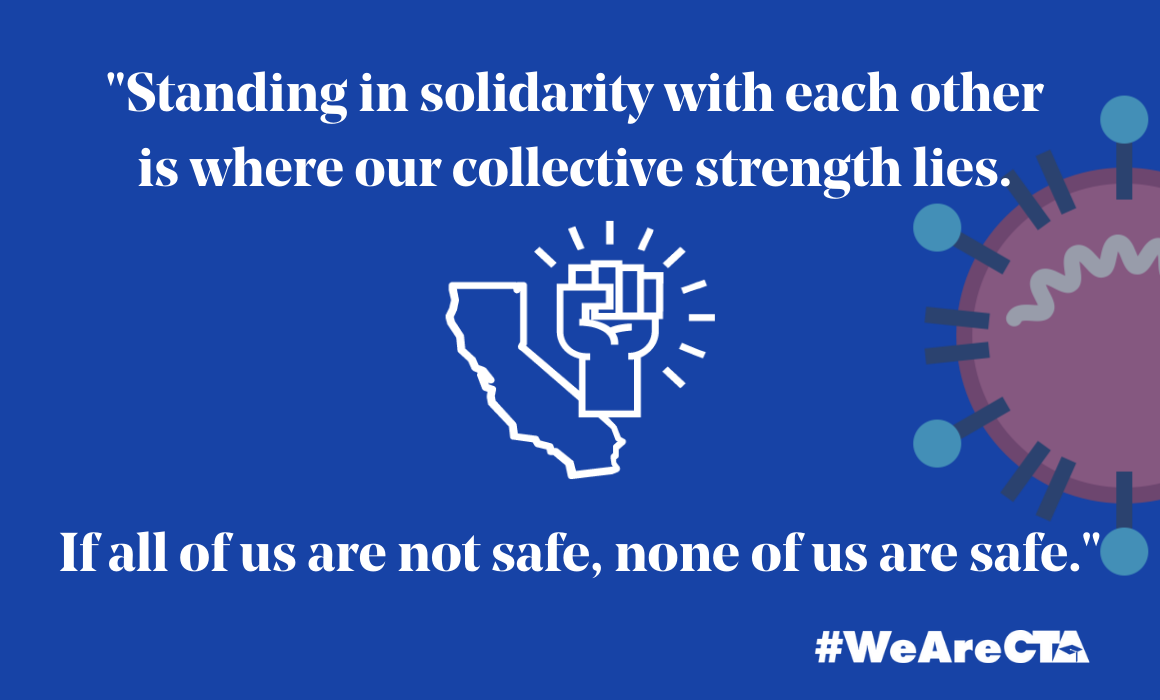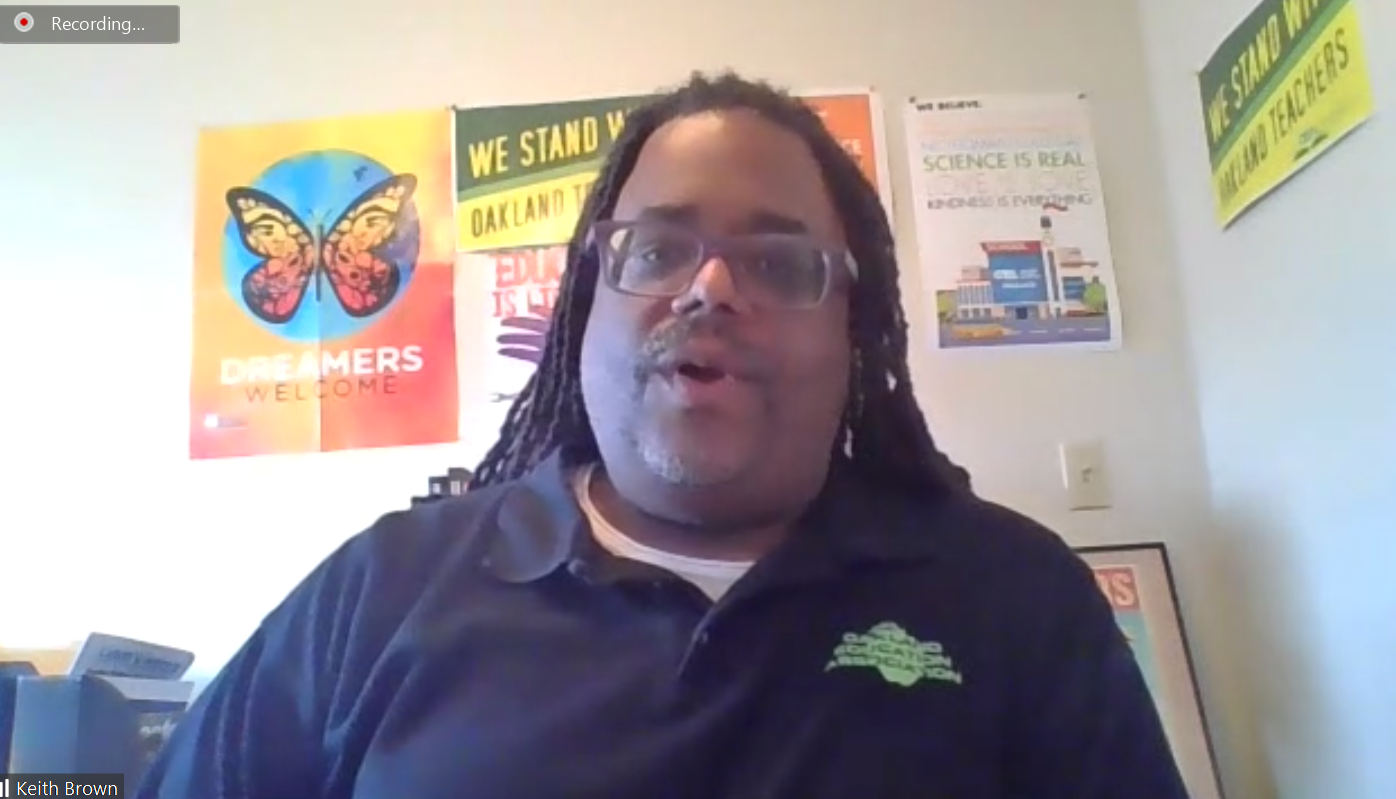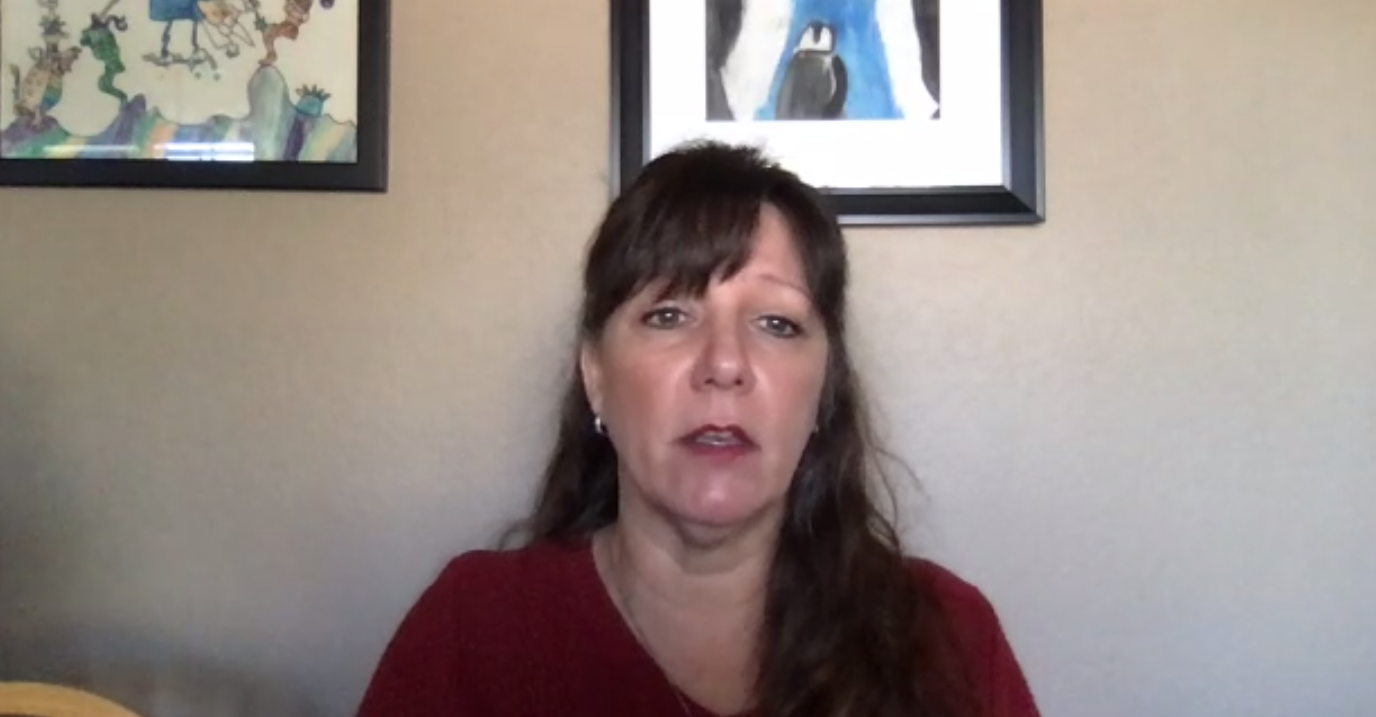
As COVID-19 cases spike across the country and here in California, Alameda County educators are rising together to demand a multi-layered pandemic defense plan that protects students, staff and communities from the deadly and still incurable virus.
The presidents of 18 Alameda County CTA locals issued a letter in October to the superintendent of Alameda County schools and the county public health officer to urge them to ensure strong COVID-19 prevention measures as they consider physically reopening schools – bringing hundreds of thousands of students and staff indoors for many hours a day, in poorly ventilated spaces and with serious underfunding.
 “This moment will define how we value our students, our communities, our families, and our essential workers. Unfortunately, schools are opening without comprehensive safety protections and without testing-for-prevention programs required for the safest learning environment,” the letter reads. “Experts agree that testing is critical to prevent transmission and outbreaks in schools. Yet the state and county has created an environment where schools can open without an integrated program for testing and tracing.”
“This moment will define how we value our students, our communities, our families, and our essential workers. Unfortunately, schools are opening without comprehensive safety protections and without testing-for-prevention programs required for the safest learning environment,” the letter reads. “Experts agree that testing is critical to prevent transmission and outbreaks in schools. Yet the state and county has created an environment where schools can open without an integrated program for testing and tracing.”
The local presidents said they hear reports from educators every day of outdated heating and ventilation systems, classroom windows that won’t open and other pandemic safety issues. This is in addition to reports of not enough school nurses, no training on COVID-19 protocols, understaffing, lack of transparency regarding cases and outbreaks, and testing-for-prevention and rapid tracing left glaringly absent or uncoordinated.

Oakland Education Association President Keith Brown
“We want to return to the magic of the classroom. But we need to be assured that our schools are safe and our students and educators will have access to testing,” says Keith Brown, Oakland Education Association (OEA) president. “
In their letter, the unified Alameda County educator leaders say that safe school reopening will require a standardized and coordinated approach to ensure safety measures are actually implemented, regular and accessible testing for prevention dedicated to schools, rapid case notification and contact tracing, isolation support and medical care for vulnerable students and school families, and data transparency when there are cases, outbreaks or quarantines in schools. With Alameda County green-lighting middle and high schools for potential reopening at the beginning of this week, these safety measures are critical.
“The lack of testing and sufficient investment in resources are the chief concerns of our teachers,” says Hari Vasu-Devan, East Bay Innovation Academy Teachers Association (EBIATA) president. “If we don’t have rapid, accurate testing data on community members, we cannot say that we are safely opening, period. Temperature checks and sanitation of surfaces are smoke and mirrors given the level of asymptomatic community spread for COVID-19.”
Livermore Education Association (LEA) President Aimee Thompson says the county’s announcement about the potential for secondary schools to physically reopen raises serious concerns, including students moving from class-to-class and traveling through packed hallways.
“The testing is important because so many people who have this virus are asymptomatic,” she says. “Livermore has two ZIP codes: One in the Red tier and one in the Orange. We need to drill down into the data and not put folks in danger in the higher-risk areas. A virus cannot spread without people moving it.”

Livermore Education Association President Aimee Thompson
These equity issues were a major reason the Alameda County presidents felt the need to issue a unified letter. The COVID pandemic is disproportionately impacting Black and Brown communities, and preventative measures and approaches that ignore this inequity put families at risk.
“I am concerned for the safety of all students and staff in our county and region, as well as disparate reopening plans that lead to decreased safety and increased spread for ALL of us,” says Vasu-Devan. “This must be done safely in coordination.”
Emery Teachers’ Association (ETA) President Ericka Castillo says the county’s approach must take into account the disparity of virus spread, resources and prevention between communities, so all students, educators and their families are safe.
“Environmental racism is real – it cannot be safe for just some communities in Alameda County; It must be safe in all communities to return to the classroom,” Castillo says. “These numbers are people, not points on a test. Every family in our community should know that they will continue to be safe once their child is back in the classroom.”
The presidents also called on Alameda County to establish a dashboard system that lists by district and school the number of COVID cases, outbreaks and quarantines, like those utilized in the states of New York and Mississippi. A transparent system fosters trust in the communities and helps provide a better understanding of COVID transmission and prevention.
“The goal is for people to make informed choices,” says Thompson. “If there’s not a transparent way to communicate how many cases there are in a district, I don’t know how a parent can make an informed decision.”
The presidents of the 18 Alameda County locals have been meeting regularly since shelter-in-place orders were first issued in March, sharing information about the pandemic and providing much-needed support to each other as they support and defend their members, students and communities.
“When we decided to be local leaders, we didn’t sign up to deal with a global pandemic. Our day is spent supporting others. We need to support each other,” says OEA President Brown. “This is a collective effort to ensure our students and families are safe. As educators across the county, we have a lot of power.”
Educators’ biggest weapon against COVID: Unity
What advice do you have for educators facing the same health and safety issues across the state?
“Standing in solidarity with each other is where our collective strength lies. All educators and all students across the state should be safe when returning to our classrooms. If all of us are not safe, none of us of safe.” – Ericka Castillo, ETA
“Educators have a collective voice and collective power to work with communities to make sure students are safe. We are educators and we know what our students need to be successful. Use that collective voice. You’re not in this alone.” – Keith Brown, OEA
“You are not alone. Each of us popping off individually doesn’t have the same power as all of us standing together for safety. Being united together helps put pressure on the county and state to lead with safety.”— Aimee Thompson, LEA
“Organize regionally. Leverage districts where there is collaboration with the other side of the bargaining table – those administrations and boards should put pressure on neighboring districts to do what’s right.” – Hari Vasu-Devan, EBIATA